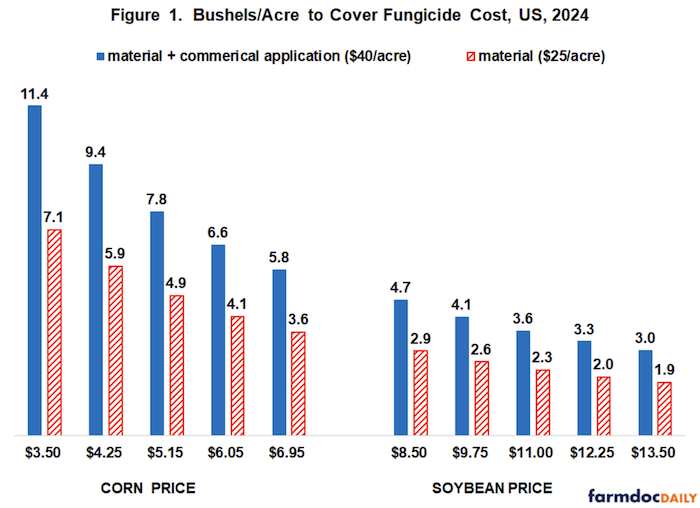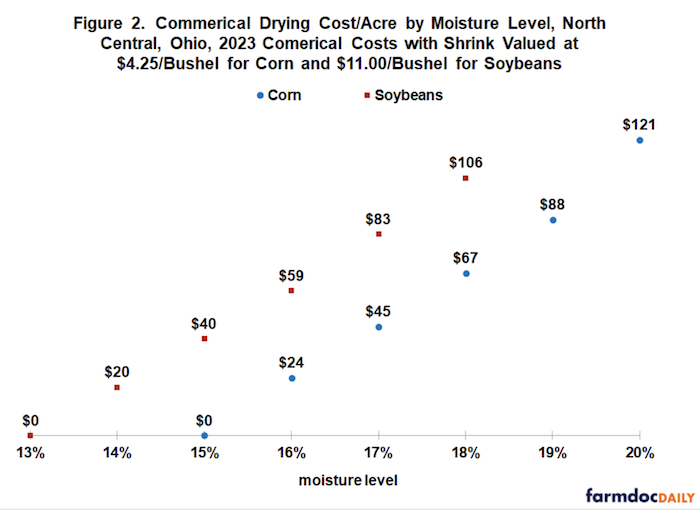Yield Response to Cover Application Costs
Fungicides need to increase yield enough to at least cover material and application costs. This increase also depends on the price of the crop. Using a $40/acre material and application cost based on likely 2024 prices, corn yield needs to increase by 5.8 bushels when corn price is $6.95, close to the 2021 harvest price. At a $4.25 price, near current cash forward bids for 2024 harvest; yield needs to increase 9.4 bushels (see Figure 1). For soybeans, an increase of 3.6 bushels per acre is needed at today’s cash forward bid of $11.00. The yield increase needed to cover only the material cost ($25) is also presented in Figure 1.
Uncertain Yield Response
Studies find a positive but highly variable corn and soybean yield response to the use of fungicides. Paul, et al. reported an overall average corn yield response of +3.7 to +6.2 bushels per acre that varied across four fungicide products. Kandel, et al. reported an overall average soybean yield response of +1.6 bushels per acre. These average yield responses are below break-even yield responses at current crop prices. Both of these studies are meta (i.e. summary) analyses of a large number of individual studies: 212 corn studies and 240 soybean studies. Individual studies found yield responses that ranged from negative to large positive.Other consistent findings from field trials include a higher yield response:- the more severe the fungal infection (if infection is low, average response is smaller but still positive),
- the less resistant the seed variety, and
- the higher is precipitation.
Uncertain Cost – Drying
An unknown cost when applying fungicides is drying cost. This potential cost arises because fungicides keep the crop greener longer, thus extending its reproductive fill period. The importance of drying cost is magnified because the entire crop is impacted and because drying costs are not trivial. Each one percentage point increase in moisture above the no-drying maximum increases corn and soybean drying cost by $20 to $25 per acre (see Figure 2). Figure 2 is derived using commercial drying charges during the 2023 harvest in North Central, Ohio, but with the percent shrink (i.e. reduction) applied to a crop’s bushels for excess moisture valued at $4.25 for corn and $11.00 for soybeans. To summarize, the bushels needed to cover the total cost from using fungicides can increase notably if fungicides increase moisture at harvest above the no-drying maximum.





